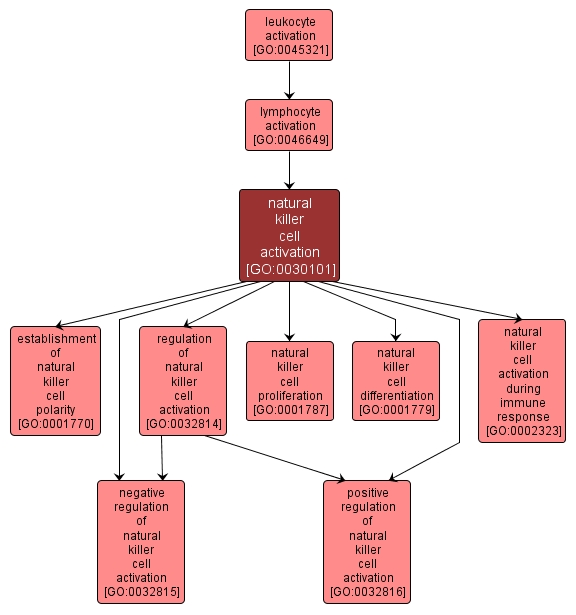GO TERM SUMMARY
|
| Name: |
natural killer cell activation |
| Acc: |
GO:0030101 |
| Aspect: |
Biological Process |
| Desc: |
The change in morphology and behavior of a natural killer cell in response to a cytokine, chemokine, cellular ligand, or soluble factor. |
| Synonyms:
|
|

|
INTERACTIVE GO GRAPH
|














